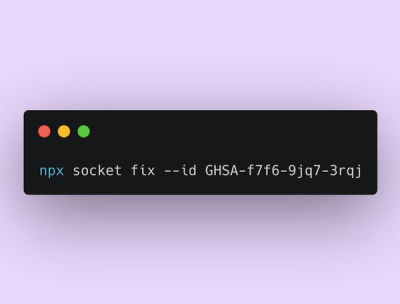
Product
Rust Support Now in Beta
Socket's Rust support is moving to Beta: all users can scan Cargo projects and generate SBOMs, including Cargo.toml-only crates, with Rust-aware supply chain checks.
Gradients provide a self consistency test function to perform gradient checking on your deep learning models. It uses centered finite difference approximation method to check the difference between analytical and numerical gradients and report if the check fails on any parameters of your model. Currently the library supports only PyTorch models built with custom layers, custom loss functions, activation functions and any neural network function subclassing AutoGrad.
pip install gradients
Optimizing deep learning models is a two step process:
Compute gradients with respect to parameters
Update the parameters given the gradients
In PyTorch, step 1 is done by the type-based automatic differentiation system torch.nn.autograd and 2 by the package implementing optimization algorithms torch.optim. Using them, we can develop fully customized deep learning models with torch.nn.Module and test them using Gradient as follows;
class MySigmoid(torch.autograd.Function):
@staticmethod
def forward(ctx, input):
output = 1/(1+torch.exp(-input))
ctx.save_for_backward(output)
return output
@staticmethod
def backward(ctx, grad_output):
input, = ctx.saved_tensors
return grad_output*input*(1-input)
class MSELoss(torch.autograd.Function):
@staticmethod
def forward(ctx, y_pred, y):
ctx.save_for_backward(y_pred, y)
return ((y_pred-y)**2).sum()/y_pred.shape[0]
@staticmethod
def backward(ctx, grad_output):
y_pred, y = ctx.saved_tensors
grad_input = 2 * (y_pred-y)/y_pred.shape[0]
return grad_input, None
class MyModel(torch.nn.Module):
def __init__(self,D_in, D_out):
super(MyModel,self).__init__()
self.w1 = torch.nn.Parameter(torch.randn(D_in, D_out), requires_grad=True)
self.sigmoid = MySigmoid.apply
def forward(self,x):
y_pred = self.sigmoid(x.mm(self.w1))
return y_pred
import torch
from gradients import Gradient
N, D_in, D_out = 10, 4, 3
# Create random Tensors to hold inputs and outputs
x = torch.randn(N, D_in)
y = torch.randn(N, D_out)
# Construct model by instantiating the class defined above
mymodel = MyModel(D_in, D_out)
criterion = MSELoss.apply
# Test custom build model
Gradient(mymodel,x,y,criterion,eps=1e-8)
Gradients@software{nambusubramaniyan_saranraj_2021_5176243,
author = {Nambusubramaniyan, Saranraj},
title = {gradients},
month = aug,
year = 2021,
publisher = {Zenodo},
version = {1.0.0},
doi = {10.5281/zenodo.5176243},
url = {https://doi.org/10.5281/zenodo.5176243}
}```
FAQs
Gradient Checker for Custom built PyTorch Models
We found that gradients demonstrated a healthy version release cadence and project activity because the last version was released less than a year ago. It has 1 open source maintainer collaborating on the project.
Did you know?

Socket for GitHub automatically highlights issues in each pull request and monitors the health of all your open source dependencies. Discover the contents of your packages and block harmful activity before you install or update your dependencies.

Product
Socket's Rust support is moving to Beta: all users can scan Cargo projects and generate SBOMs, including Cargo.toml-only crates, with Rust-aware supply chain checks.

Product
Socket Fix 2.0 brings targeted CVE remediation, smarter upgrade planning, and broader ecosystem support to help developers get to zero alerts.

Security News
Socket CEO Feross Aboukhadijeh joins Risky Business Weekly to unpack recent npm phishing attacks, their limited impact, and the risks if attackers get smarter.